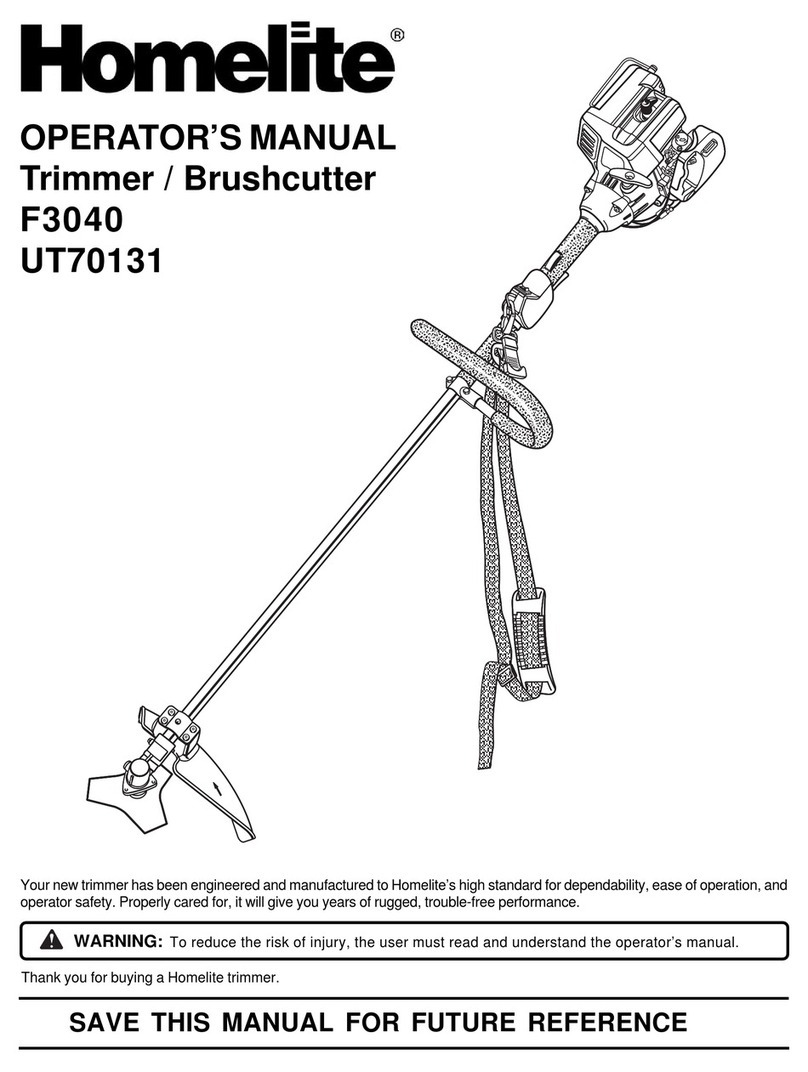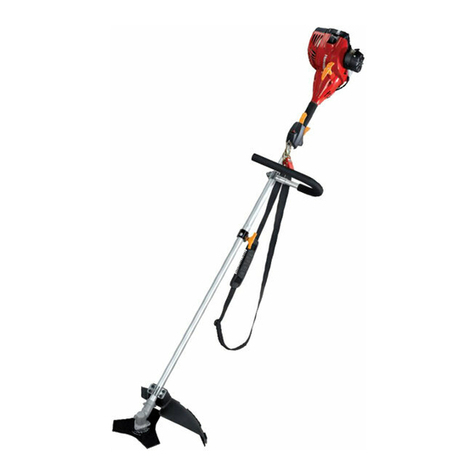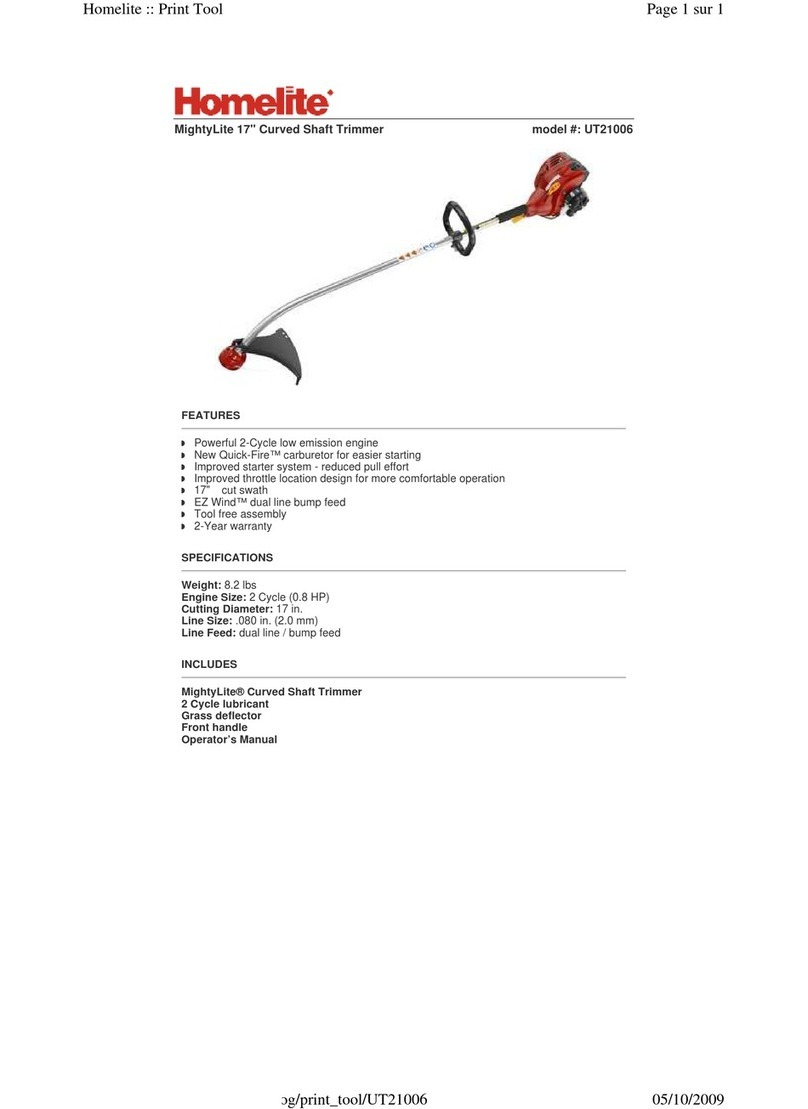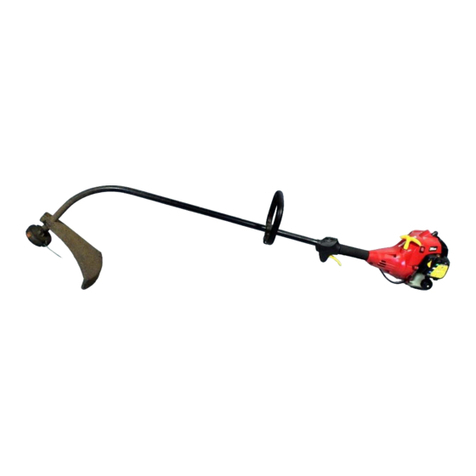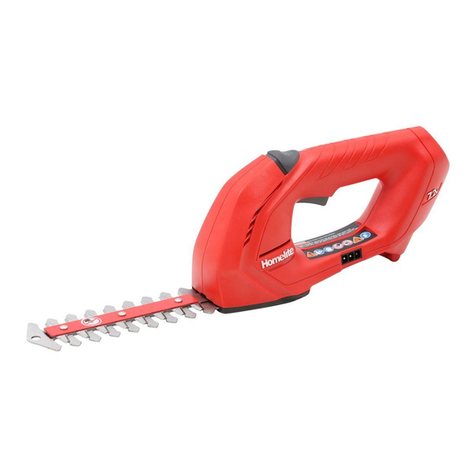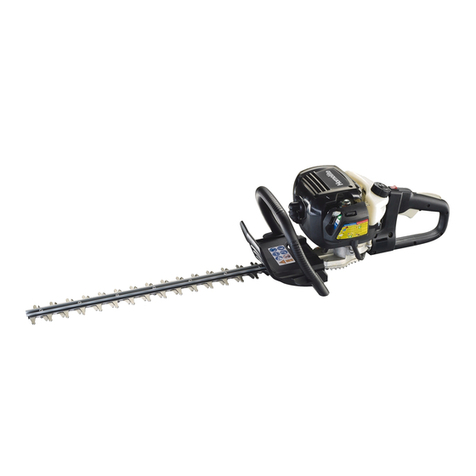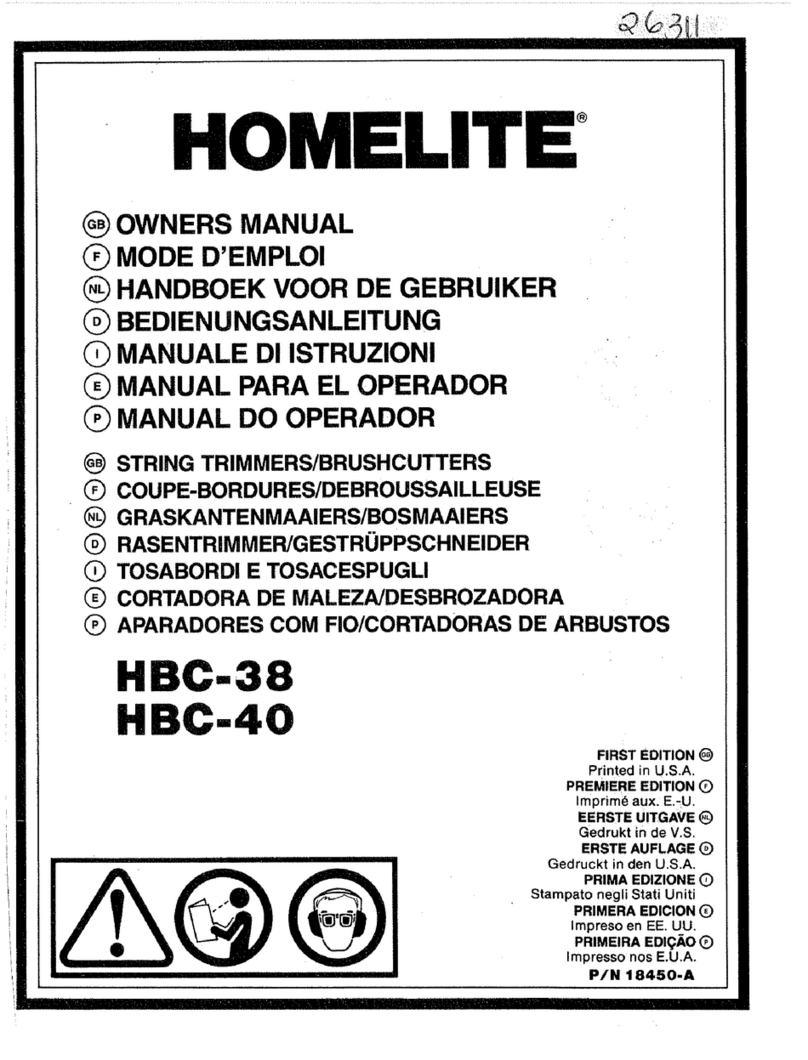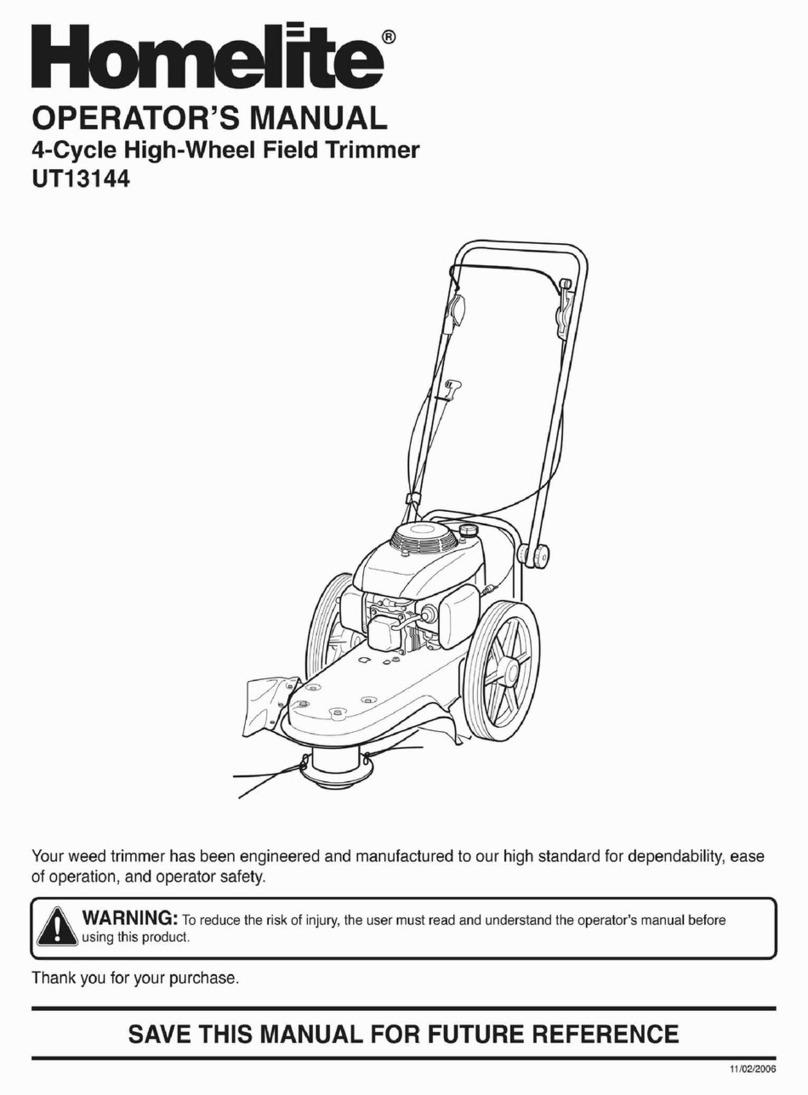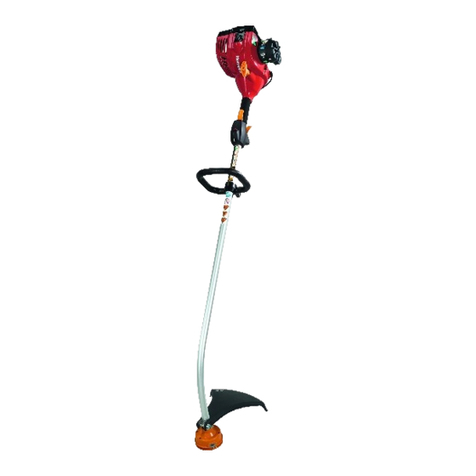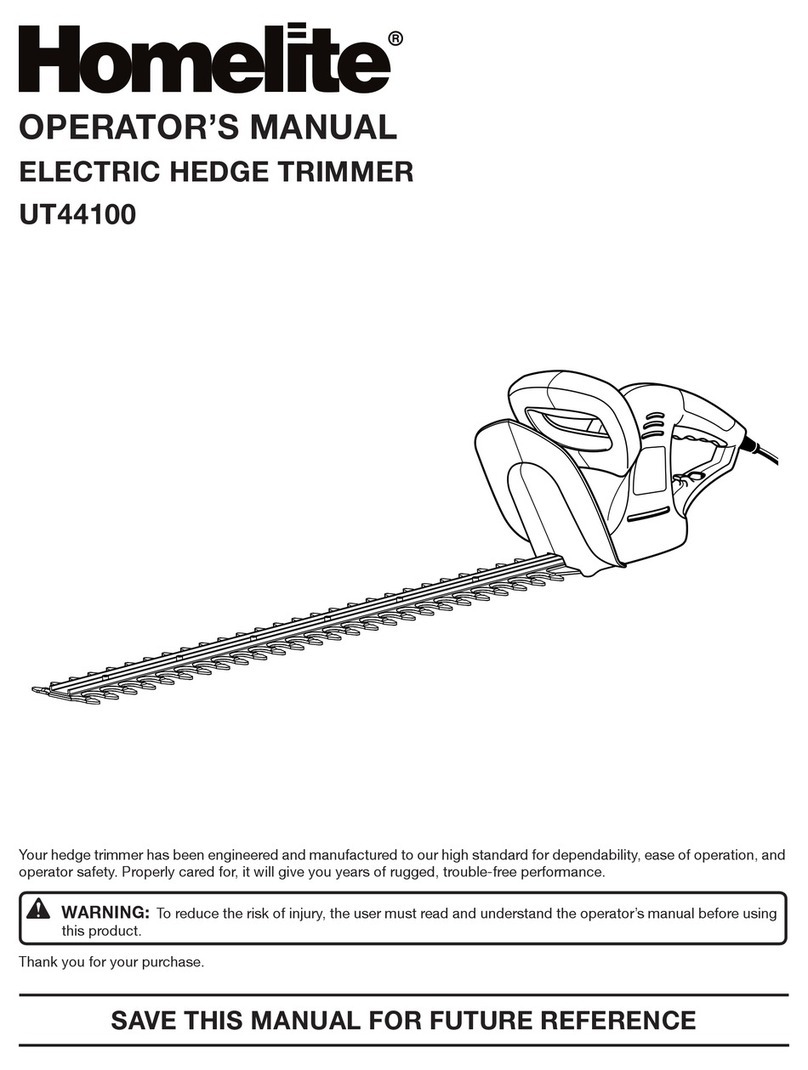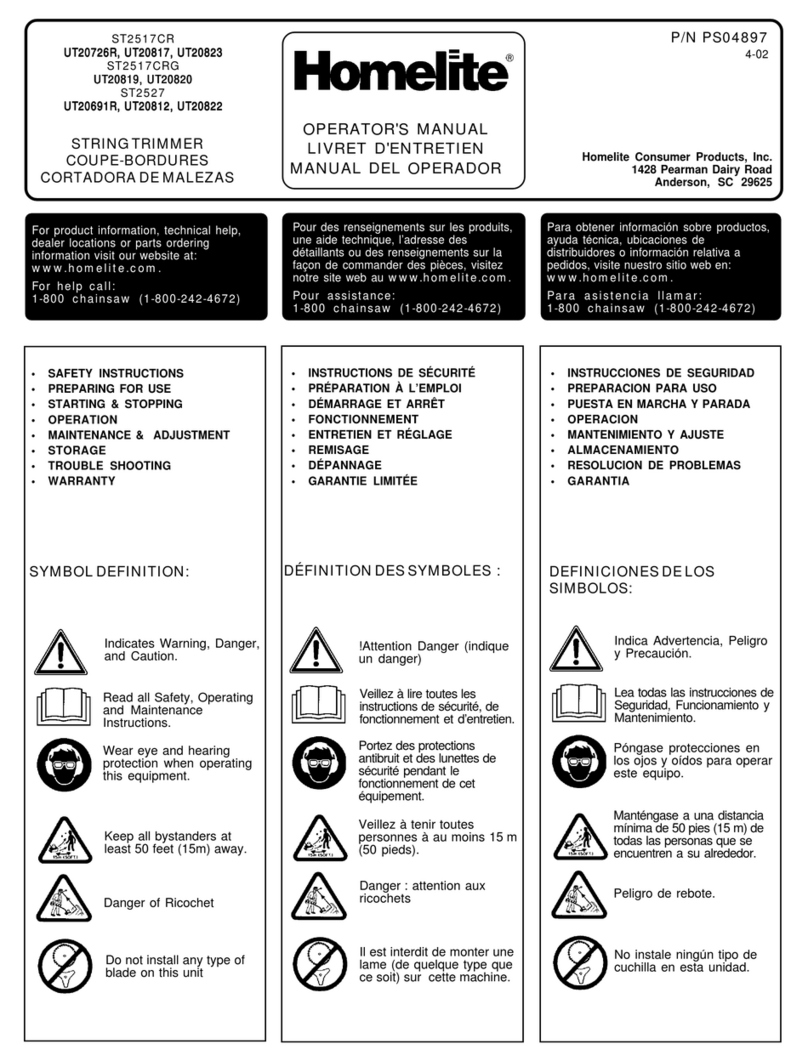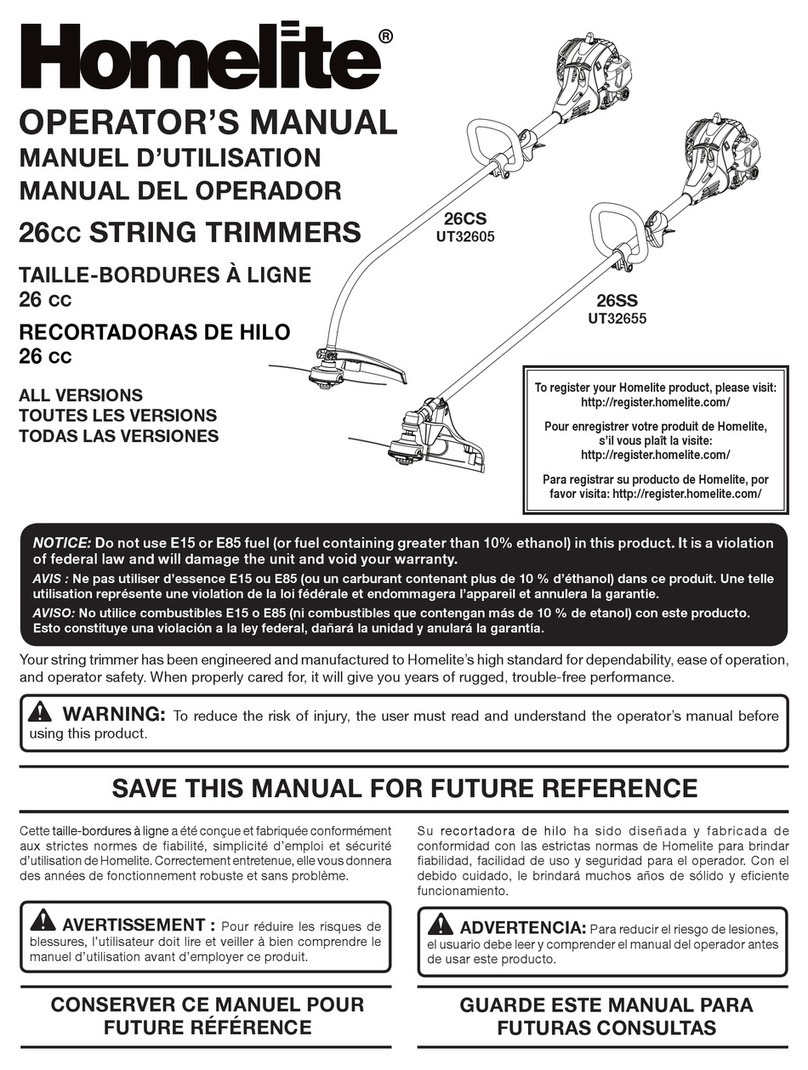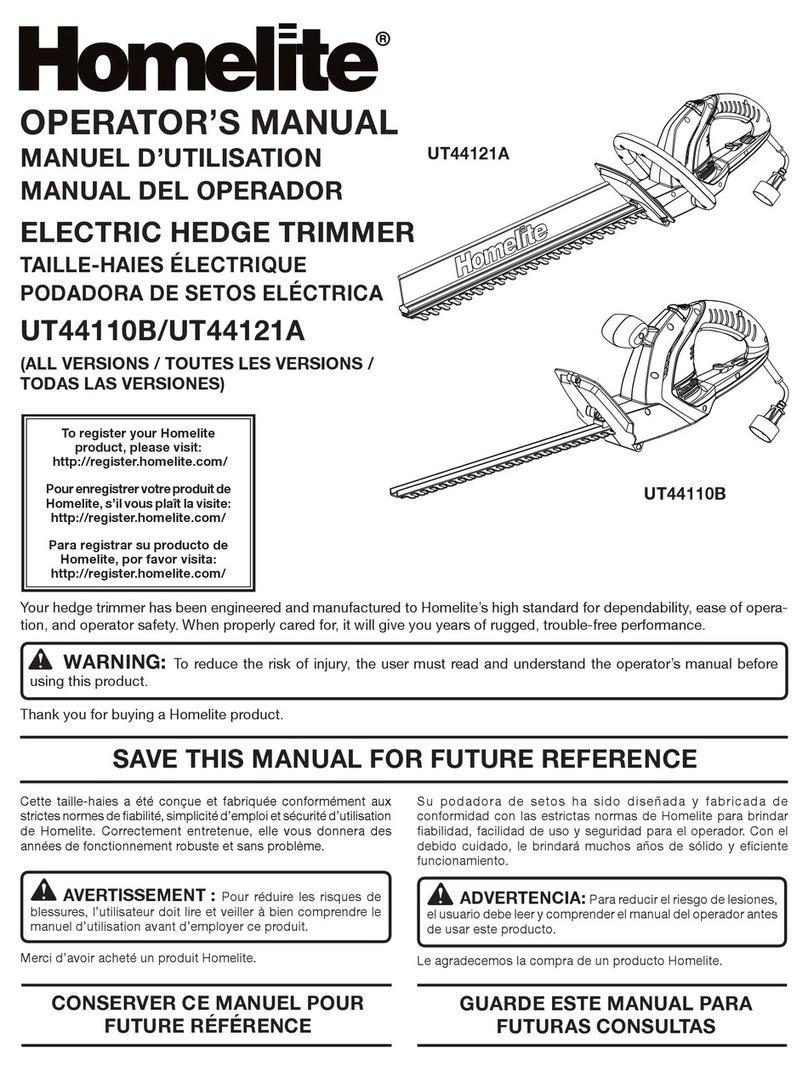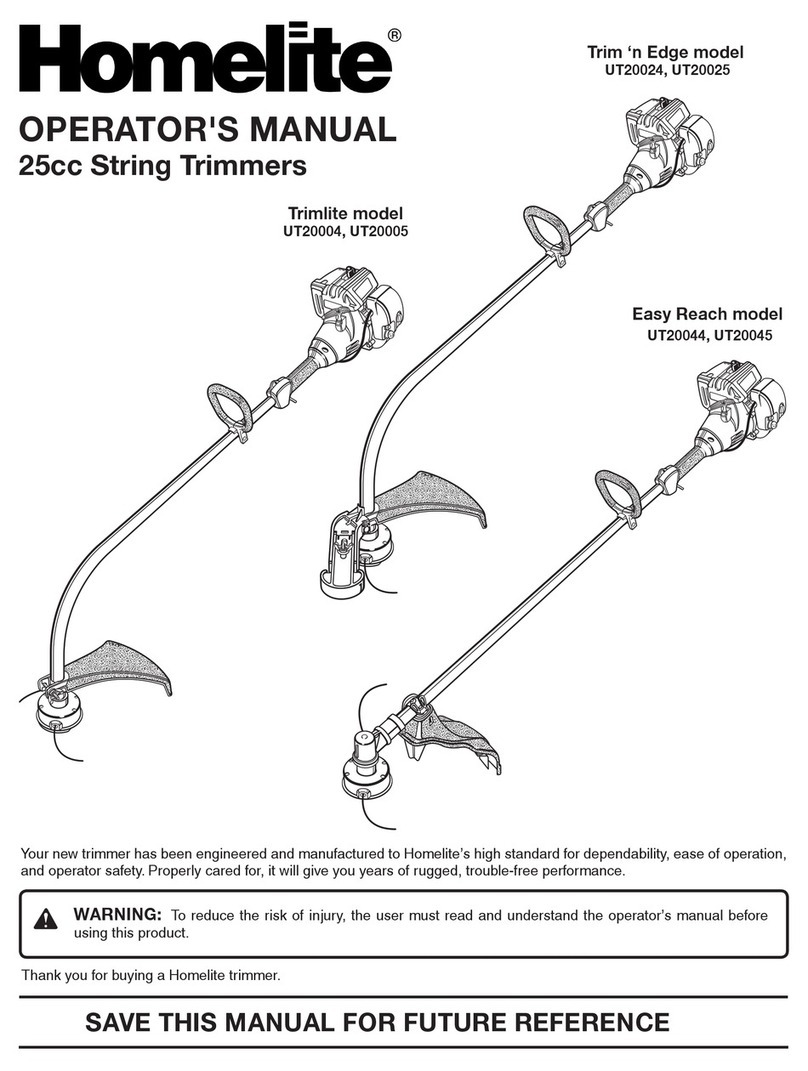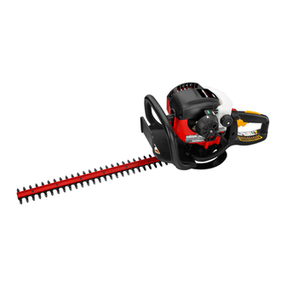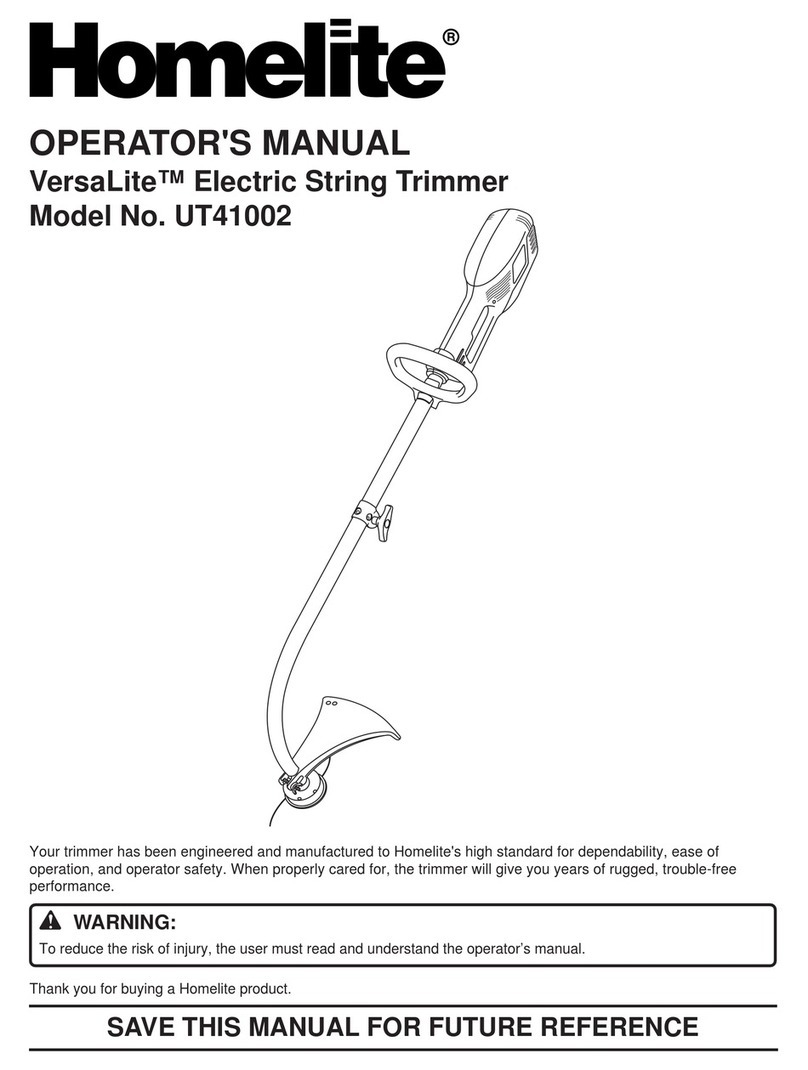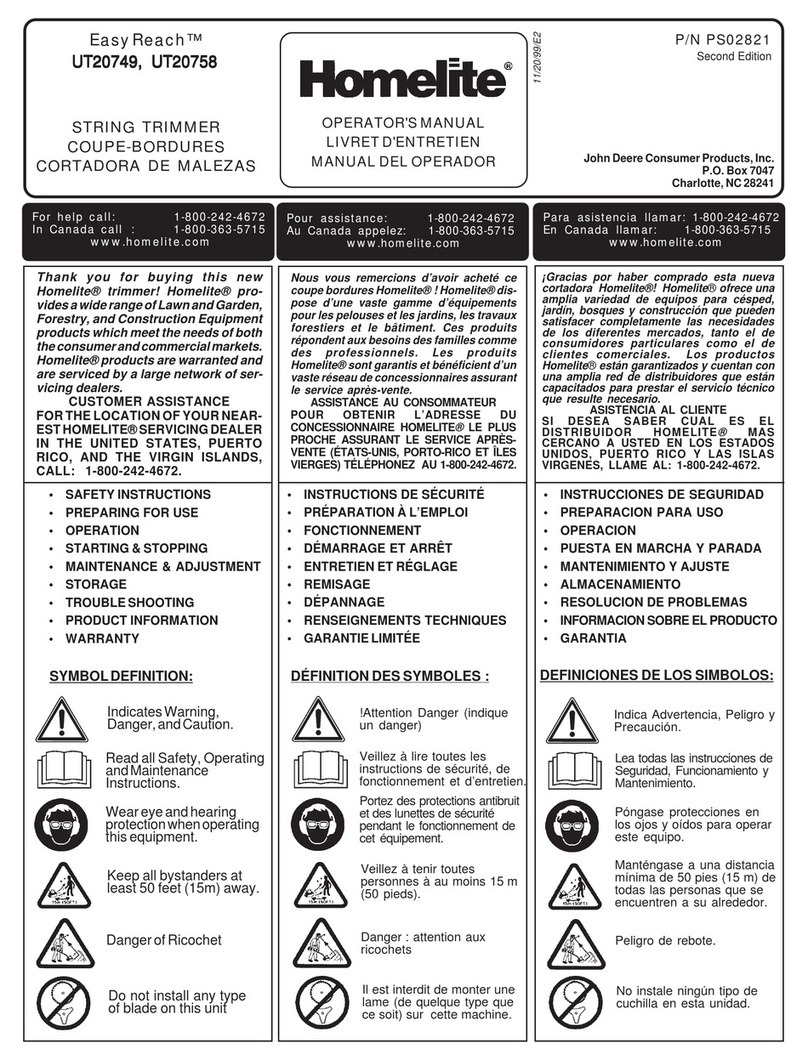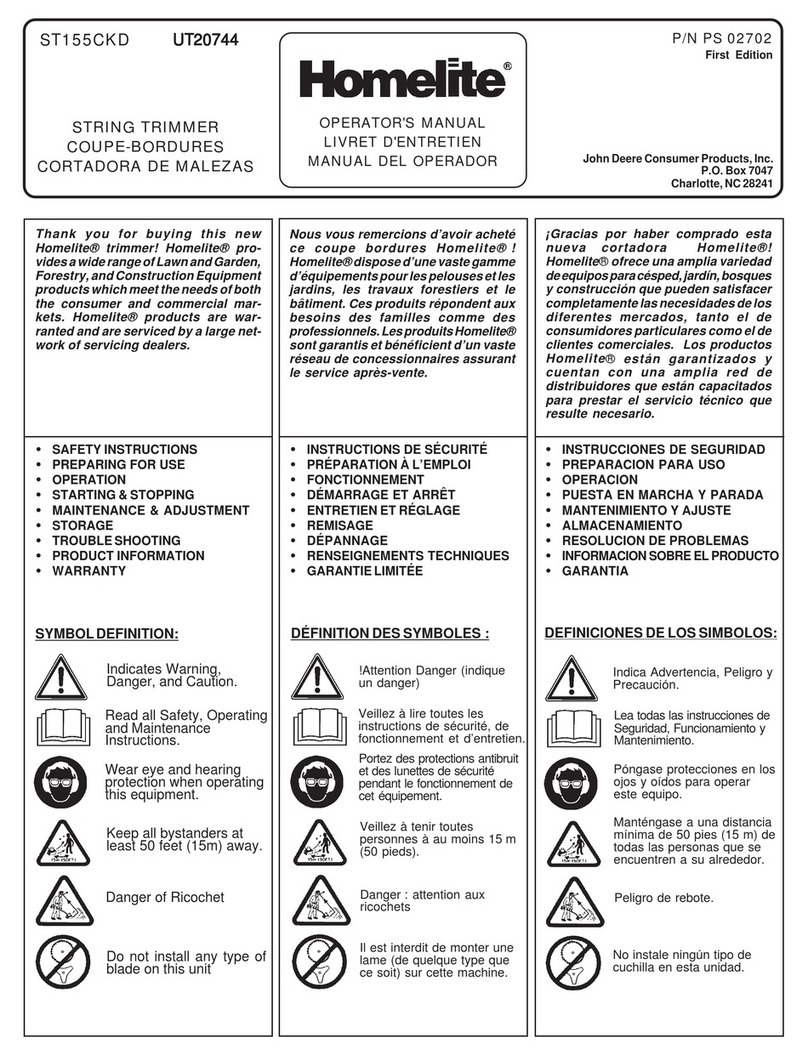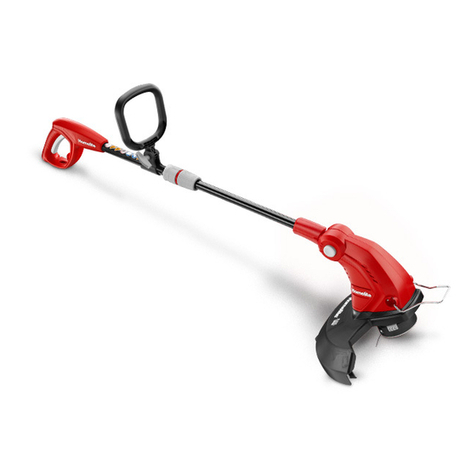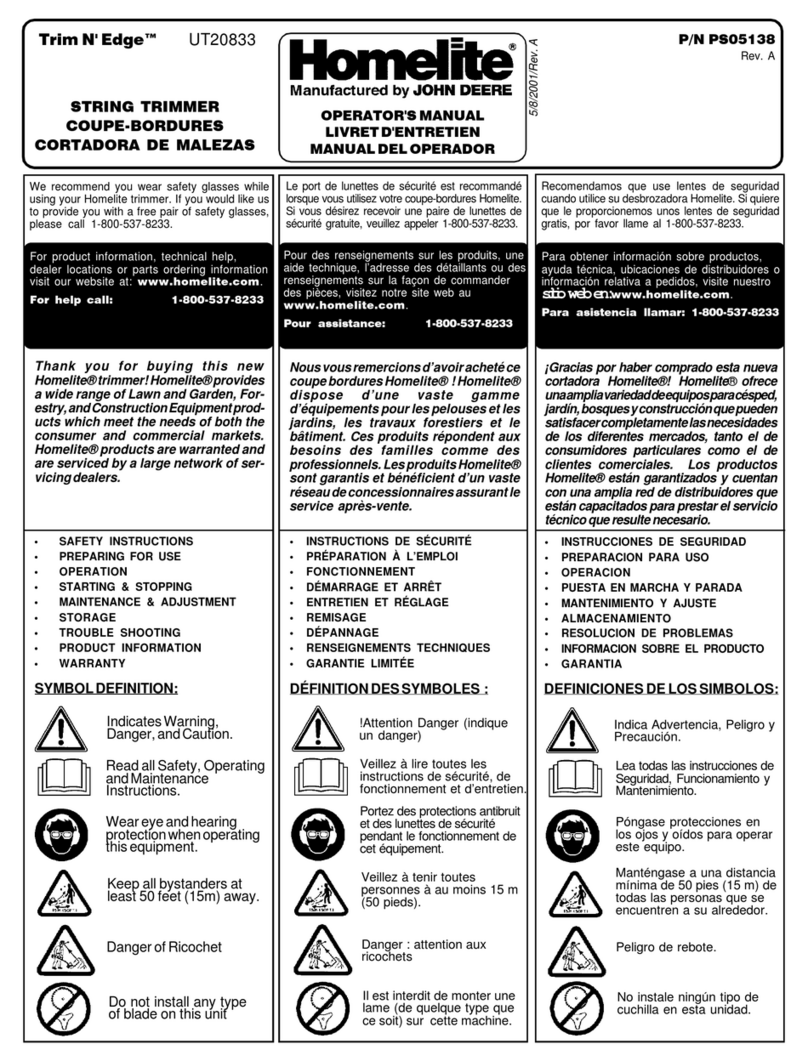
3
■■
■■
■Inspect the unit before each use for loose fasteners, fuel
leaks etc. Replace any damaged parts before use.
■■
■■
■Thestringheadorbladewillrotateduringcarburettor
adjustments.
■■
■■
■Ithas been reportedthat vibrations fromhand-held tools
may contribute to a condition called Raynaud’s Syn-
drome in certain individuals. Symptoms may include
tingling, numbness and blanching of the fingers, usually
apparentuponexposureto cold.Hereditaryfactors,
exposure to cold and dampness, diet, smoking and work
practices are all thought to contribute to the develop-
ment of these symptoms. It is not known at present
what, if any, vibrations or extent of exposure may
contributetothe condition. There are measureswhich
can be taken by the operator to possibly reduce the
effects of vibration:
a) Keepyourbodywarmincoldweather.Whenoperat-
ing the unit wear gloves to keep the hands and wrists
warm. It is reported that cold weather is a major
factorcontributingtoRaynaud’sSyndrome.
b) After each period of operation, exercise to increase
bloodcirculation.
c) Take frequent work breaks. Limit the amount of
exposureperday.
d) Keepthetoolwellmaintained,fastenerstightened
andwornpartsreplaced.
If you experience any of the symptoms of this condition,
immediately discontinue use and see your doctor about
these symptoms.
■■
■■
■Mix and store fuel in a container approved for petrol.
■■
■■
■Mix fuel outdoors where there are no sparks or flames.
Wipe up any fuel spillage. Move 9 m (30 ft) away from
refuellingsitebeforestartingengine.
■■
■■
■Stopthe engine and allow to cool before refuellingor
storing the unit.
■■
■■
■Allow the engine to cool; empty the fuel tank and secure
the unit from moving before transporting in a vehicle.
SPECIFIC SAFETY RULES FOR TRIMMER USE
■■
■■
■Replacestring head ifcracked, chipped ordamaged in
any way. Be sure the string head or blade is properly
installed and securely fastened. Failure to do so may
cause serious injury.
■■
■■
■Make sure all guards, straps, deflectors and handles are
properlyandsecurelyattached.
■■
■■
■Use only the manufacturer’s replacement string in the
cutting head. Do not use any other cutting attachment.
■■
■■
■Never operate unit without the grass deflector in place
andingoodcondition.
■■
■■
■Maintaina firm grip on both handles while trimming.Keep
string head below waist level. Never cut with the string
head located over 76 cm (30 in) or more above
theground.
SPECIFICSAFETYRULESFORBRUSHCUTTERAND
BLADEUSE
■■
■■
■After engine stops, keep rotating blade in heavy grass
or pulpy weeds until it stops.
■■
■■
■Do not operate the brushcutter unless the blade guard is
firmly secured in place and in good condition.
■■
■■
■Use heavy gloves while installing or removing blades.
■■
■■
■Always stop the engine and remove the sparking plug
wirebeforeattempting to remove anyobstructioncaught
orjammed in the bladeorbefore removing and installing
theblade.
■■
■■
■Do not attempt to touch or stop the blade when it
is rotating.
■■
■■
■A coasting blade can cause injury while it continues to
spin after the engine is stopped or throttle trigger re-
leased.Maintainproper control until thebladehas
completelystoppedrotating.
■■
■■
■Replace any damaged blade. Always make sure blade is
installed correctly and securely fastened before each
use. Failure to do so may cause serious injury.
■■
■■
■Useonlythe manufacturer’s replacementTRI-ARC blade
intended for use on this brushcutter.Do not use any
otherblade.
■■
■■
■TheTRI-ARC blade is suited for cutting pulpy weeds and
vines only.Do not use for any other purpose.Never use
theTRI-ARC blade to cut woody brush.
■■
■■
■Exercise extreme caution when using the blade with this
unit. Blade thrust is the reaction which may occur when
the spinning blade contacts anything it cannot cut.This
contact may cause the blade to stop for an instant, and
suddenly “thrust” the unit away from the object that was
hit.This reaction can be violent enough to cause the
operator to lose control of the unit. Blade thrust may
occur without warning if the blade snags, stalls or binds.
This is more likely to occur in areas where it is difficult to
see the material being cut.For cutting ease and safety,
approach the weeds being cut from the right to the left. In
the event that an unexpected object or woody stock is
encountered, this could minimise the blade thrust
reaction.
■■
■■
■Never cut any material over 13 mm (1/2 in) diameter.
■■
■■
■Alwayswear the shoulderstrap when using the
brushcutter andadjust to acomfortableoperating
position.Maintain a firmgrip on bothhandles while
cutting with a blade. Keep the blade away from body and
belowwaist. Never usethebrushcutter with theblade
located 76 cm (30 in) or more above the ground level.
SAFETY
